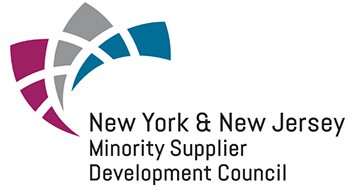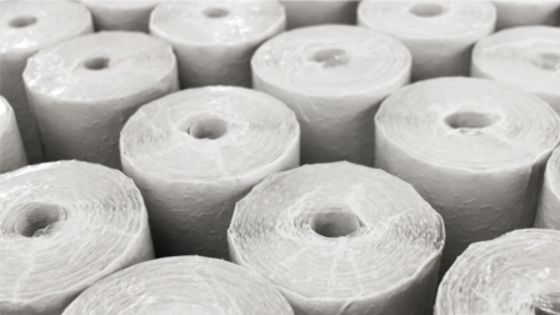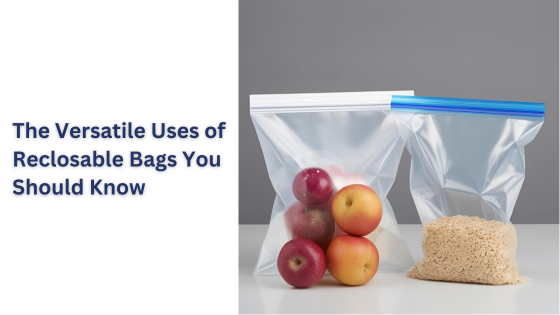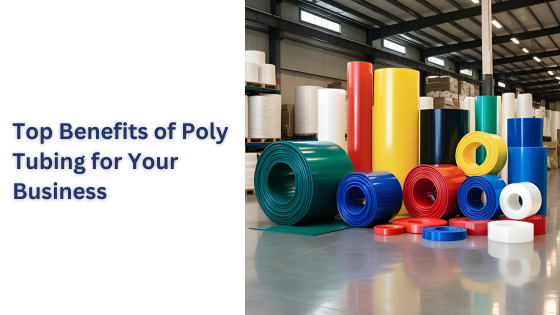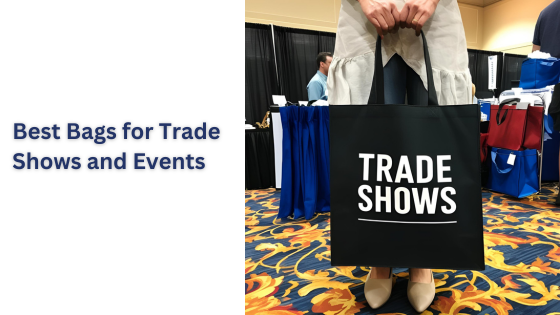Whether you’re managing a construction site, protecting inventory, or setting up temporary enclosures, plastic sheeting is a versatile solution that meets a wide range of needs. But with so many options available, how do you choose the right polyethylene sheeting for your business?
From heavy duty plastic sheeting to specialized industrial plastic sheeting, selecting the perfect product can make or break your project. In this guide, we’ll walk you through everything you need to know about how to choose the right plastic sheeting for industrial and commercial use, ensuring durability, compliance, and value for money.
What is Poly Sheeting, and Why Does It Matter?
At its core, plastic sheeting is a continuous sheet made from polyethylene, a durable and flexible plastic.
Think of it as a multi-purpose tool for businesses—it can protect surfaces, act as a barrier, or even serve as a liner in various applications. Its adaptability comes from the ability to customize its thickness, size, color, and special properties like fire resistance or UV protection.
Choosing the right polyethylene sheeting is critical because the wrong choice can lead to costly mistakes. For example, using thin plastic sheeting for industrial use in a rugged construction environment could result in tears, delays, and wasted resources. On the other hand, over-investing in heavy-duty options for a simple task can inflate your budget unnecessarily. The goal is to match the sheeting to your specific needs, ensuring protection, longevity, and efficiency.
Why Choosing the Right Poly Sheeting is a Business Priority
For businesses, industrial plastic sheeting isn’t just a material—it’s a strategic investment. Here’s why getting it right matters:
- Protection: The right sheeting shields your assets from dust, moisture, or physical damage, preserving the quality of your materials or products.
- Durability: Properly selected heavy-duty plastic sheeting withstands tough conditions, reducing the need for frequent replacements.
- Cost Efficiency: Matching the sheeting to the job prevents overspending on unnecessary features or losses from inadequate materials.
- Compliance: Certain industries require specialized sheeting, such as fire-retardant or food-grade options, to meet safety and regulatory standards.
- Ease of Use: The correct type is easier to handle, saving your team time and effort during installation or removal.
Understanding the Types of Poly Sheeting for Industrial Use
Navigating the world of plastic sheeting for industrial use can feel overwhelming, but breaking it down into categories makes it manageable. Here’s a look at the main types of polyethylene sheeting and their business applications:
-
General Purpose Poly Sheeting
This is the go-to option for many businesses due to its versatility and affordability. Often called Visqueen, general-purpose plastic sheeting comes in clear or black and various thicknesses.
- Uses: Protecting surfaces from dust, creating temporary barriers, or serving as a moisture barrier under concrete.
- Benefits: Cost-effective, flexible, and available in rolls for easy handling.
- Best for: Businesses needing a reliable, all-purpose solution for light to medium-duty tasks.
-
Construction Grade Poly Sheeting
Designed for tougher environments, this heavy-duty plastic sheeting is thicker and more durable than general-purpose options, making it ideal for construction and renovation projects.
- Uses: Vapor barriers in walls, temporary enclosures, or debris protection during construction.
- Benefits: Enhanced tear resistance and optional UV inhibitors for short-term outdoor use.
- Best for: Contractors and builders looking for robust protection on job sites.
-
Reinforced Poly Sheeting
For maximum strength, reinforced plastic sheeting includes a mesh or scrim layer, boosting its resistance to tears and punctures.
- Uses: Heavy-duty tarps, temporary roofing, or enclosures for large-scale projects.
- Benefits: Exceptional durability and longevity, even under stress.
- Best for: Businesses handling high-risk or high-value projects where failure isn’t an option.
-
Fire-Retardant Poly Sheeting
Safety is non-negotiable in industries with fire hazards. Fire-retardant industrial plastic sheeting is treated to slow or prevent fire spread.
- Uses: Temporary barriers in high-risk areas or covering sensitive equipment.
- Benefits: Meets strict safety standards and is often labeled for compliance.
- Best for: Facilities with stringent fire safety requirements, such as warehouses or manufacturing plants.
-
Anti-static (ESD) Poly Sheeting
For businesses dealing with electronics, static electricity is a silent threat. Anti-static plastic sheeting prevents static buildup, protecting sensitive components.
- Uses: Packaging electronics or lining cleanrooms.
- Benefits: Safeguards expensive equipment from static-related damage.
- Best for: Tech companies, manufacturers, or logistics firms handling electronics.
-
UV-Resistant Poly Sheeting
Outdoor projects demand polyethylene sheeting that can withstand sunlight. UV-resistant options are formulated to resist degradation from UV rays.
- Uses: Greenhouses, outdoor storage covers, or pond linings.
- Benefits: Long-lasting performance in harsh outdoor conditions.
- Best for: Businesses with extended outdoor operations, such as agriculture or landscaping.
-
Food-Grade Poly Sheeting
In industries like food processing or storage, hygiene is critical. Food-grade plastic sheeting meets strict safety standards for contact with consumables.
- Uses: Lining food storage containers or creating temporary processing zones.
- Benefits: Non-toxic and compliant with food safety regulations.
- Best for: Food and beverage businesses prioritizing safety and compliance.
Key Terms to Understand When Choosing Poly Sheeting
To make informed decisions, it’s helpful to know the terminology associated with plastic sheeting. Here’s a quick glossary:
- Mil: A unit of thickness (one-thousandth of an inch). Higher mils (e.g., 6-mil) indicate thicker, stronger sheeting.
- Gauge: Another thickness measure, though less common than mil. A higher gauge means thicker material.
- Tensile Strength: The force a sheet can withstand before breaking. Higher tensile strength equals greater durability.
- Tear Resistance: How well the sheeting resists tearing once damaged. Reinforced options excel here.
- UV Inhibitors: Additives that protect against sunlight damage, crucial for outdoor use.
- FR (Fire Retardant): Indicates fire-resistant properties for safety-critical applications.
- ESD (Electrostatic Discharge): Refers to sheeting designed to prevent static buildup.
How to Choose the Right Plastic Sheeting: A Step-by-Step Guide
Selecting the perfect polyethylene sheeting for your business doesn’t have to be complicated. Follow these steps to ensure you make the right choice:
- Define the Purpose: What are you protecting against? Dust, moisture, UV rays, fire, or static? Pinpointing the primary need narrows your options.
- Assess Durability Needs: Will the sheeting face heavy wear, sharp objects, or constant handling? Opt for heavy-duty plastic sheeting or reinforced options for tough jobs.
- Consider the Environment: Is the sheeting used indoors or outdoors? Outdoor applications may require UV resistance, while indoor settings might need fire-retardant or anti-static properties.
- Determine Size and Thickness: Measure the area to cover and choose a thickness (mil) based on durability requirements. Thicker sheets (e.g., 6-mil) are better for rugged tasks.
- Evaluate Budget: Balance cost with performance. Cheaper options may save upfront but could fail prematurely, costing more in the long run.
- Check Compliance: Ensure the sheeting meets industry regulations, especially for food-grade or fire-retardant applications.
Common Mistakes to Avoid
Even seasoned professionals can make errors when selecting plastic sheeting for industrial use. Here are pitfalls to steer clear of:
- Using Thin Sheeting for Heavy Tasks: Lightweight sheets won’t hold up in demanding environments, leading to tears and project delays.
- Ignoring UV Resistance Outdoors: Non-UV-resistant sheeting will degrade quickly under sunlight, compromising protection.
- Overlooking Fire Safety: In high-risk areas, skipping fire-retardant sheeting can violate regulations and endanger workers.
- Choosing Non-Food-Grade for Food Use: This can lead to contamination and health risks in food-related businesses.
- Overspending on Unnecessary Features: Don’t pay for reinforced or specialized sheeting if a general-purpose option will do.
Making the Right Choice for Your Business
Investing in the right industrial plastic sheeting can save your business time, money, and headaches. By understanding the types, terminology, and specific needs of your project, you can confidently select plastic sheeting that delivers results. Whether you need heavy-duty plastic sheeting for a construction site or food-grade polyethylene sheeting for a processing facility, taking the time to evaluate your options ensures success.
Next time you’re sourcing plastic sheeting for industrial use, refer back to this guide. With the right knowledge, you’ll navigate the choices like a pro, securing the perfect material for your business needs.
